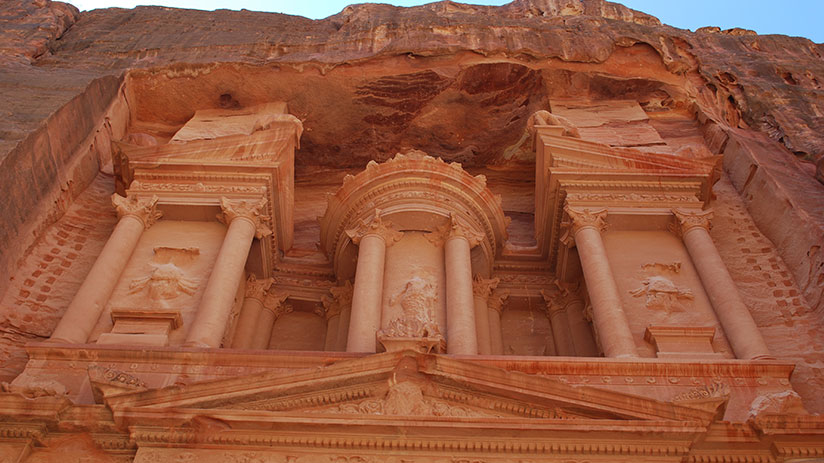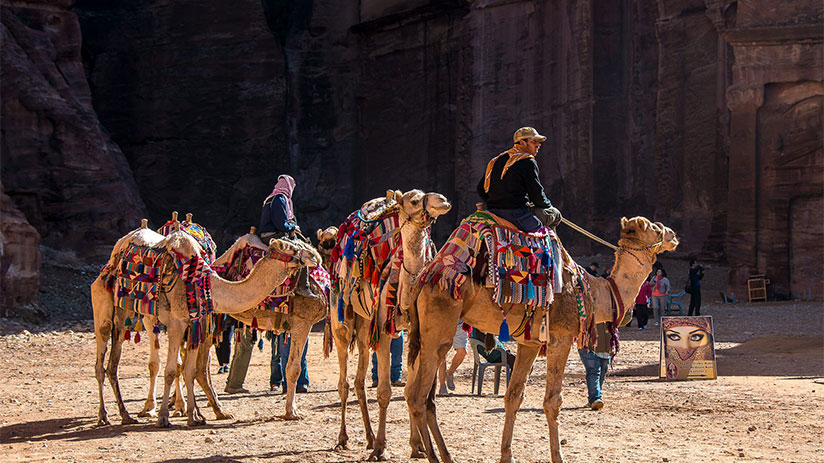
The Story
This rose-red city is the main reason why tourists decide to visit Jordan. Besides being Jordan’s most valuable treasure and greatest tourist attraction, it is without a doubt, a world wonder. The giant red mountains and vast mausoleums of a departed race have nothing in common with today’s civilizations. The beautiful city of Petra, half as old as time, and one of the greatest wonders ever wrought by Nature and Man.
The world is a book and those who do not travel, only read one page.
St. Augustine
No matter how much you read about this place, nothing prepares you for the actual beauty that you will encounter when visiting it. It is a vast city, entirely carved out of mountains by the Nabataeans, an industrious Arab people who lived in the area more than 2000 years ago. They turned it into an important junction for the silk, spice and other trade routes that linked China, India, and Arabia, with Egypt, Syria, Greece and Rome. These Arabs laid the foundations of a commercial empire that extended into Syria.
To enter the city, one must go throw a narrow gorge, called the Siq, over 1km in length. On each side there are cliffs that are eighty meters high. As you walk through the Siq, the colors and transformations of the rocks will bedazzle you. Note that motorized vehicles are not allowed entry to the site, however, horses or horse drawn carriages are available to take you through the Siq, if you do not want to walk.
Once you reach the end of the Siq, you will catch the first glimpse of Al Khazneh, or the Treasury. You will need at least four or five days to thoroughly explore everything in this area. If we haven’t mentioned it before, Petra is huge, covering 264 square kilometers; so it’s not a place that you can visit in just a few hours. However, you can hire a donkey, or even a camel. Both go through designated routes throughout the site, and will give your feet a break from the long hikes.
The tomb of an important Nabatean king lies inside a massive façade, thirty meters wide and forty three meters high. The entire structure was carved out of the sheer, dusty pink rock-face in the 1st century.

Petra: - Camels
Within the site, you will find two museums, the Petra archaeological Museum and the Petra Nabataean Museum. They both hold finds from the Petra’s colorful past.
There are several artisans from the town of Wadi Musa, and a nearby Bedouin settlement selling local handicrafts, such as pottery, Bedouin jewelry and souvenirs inside the site.


